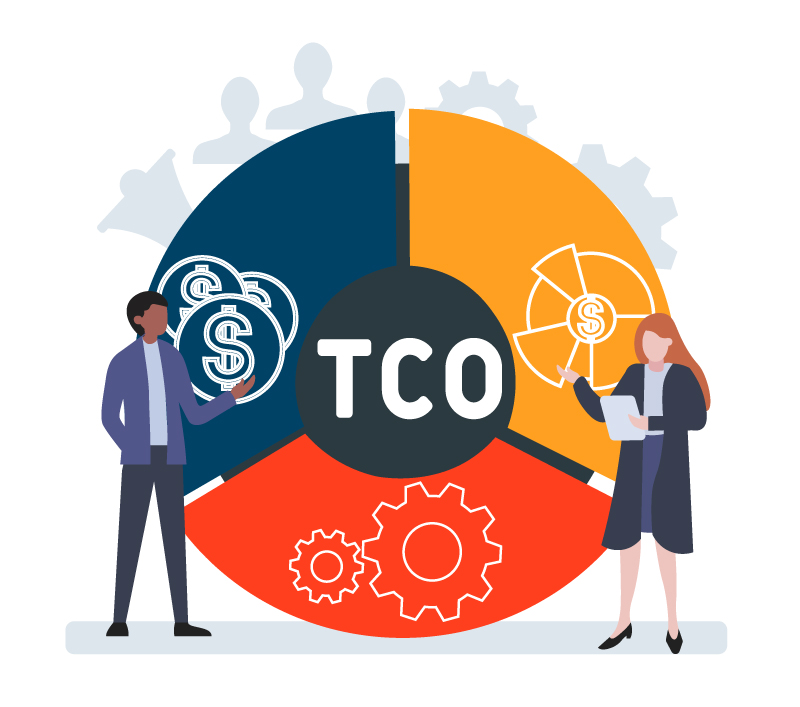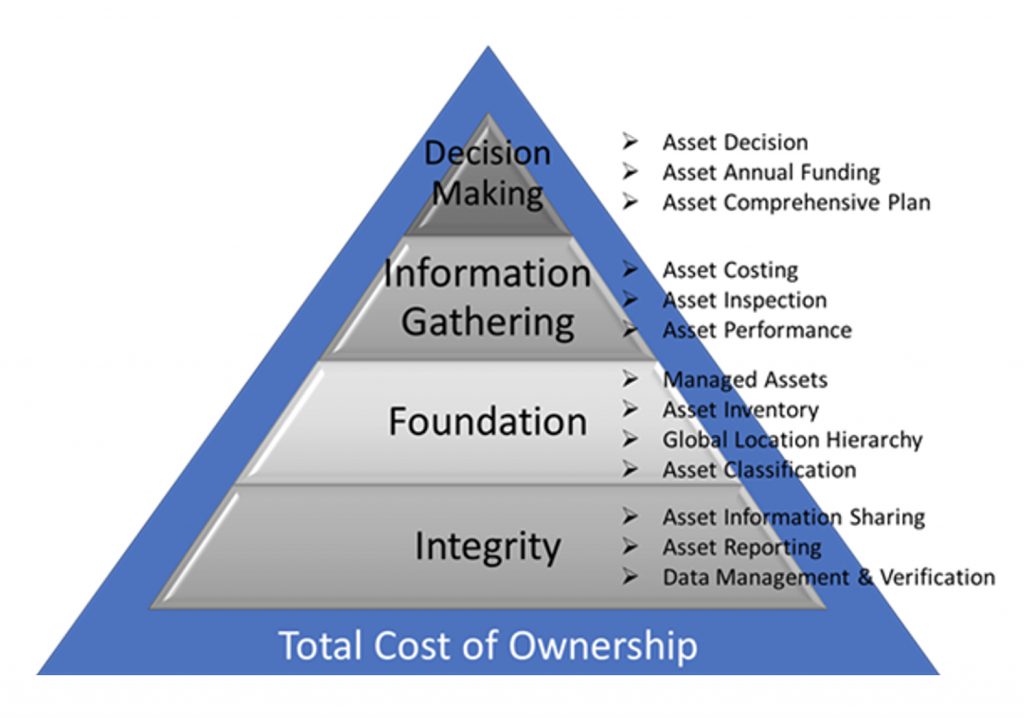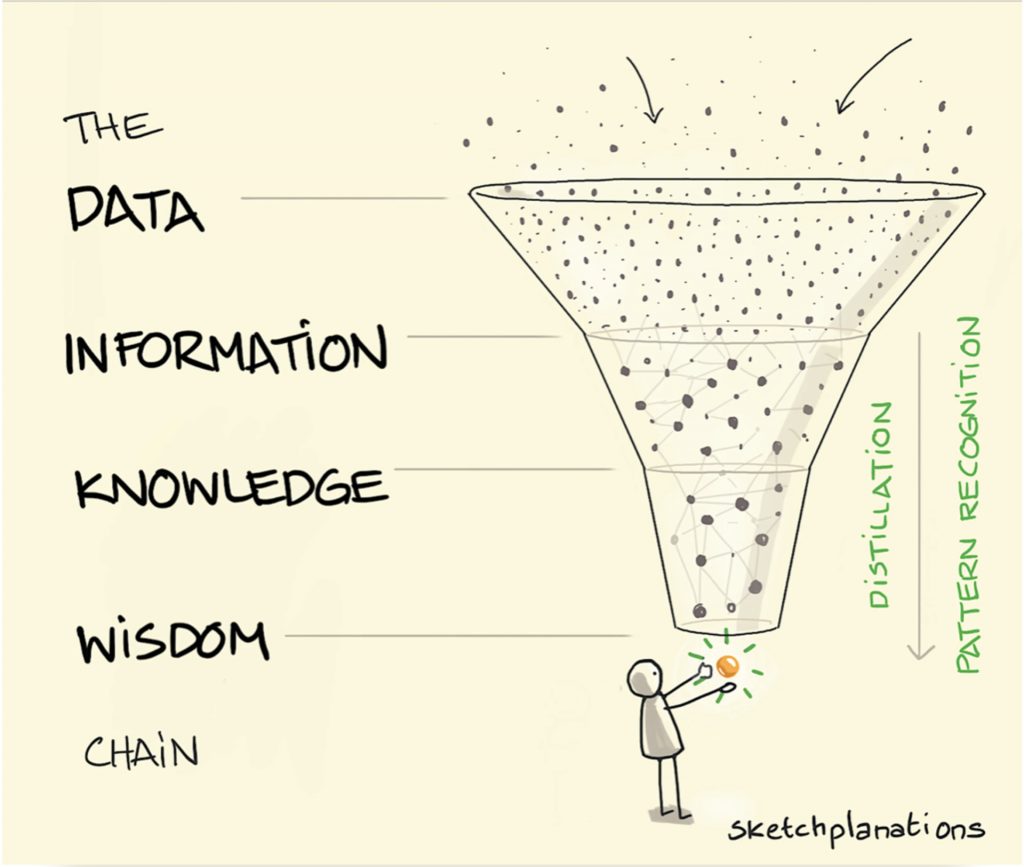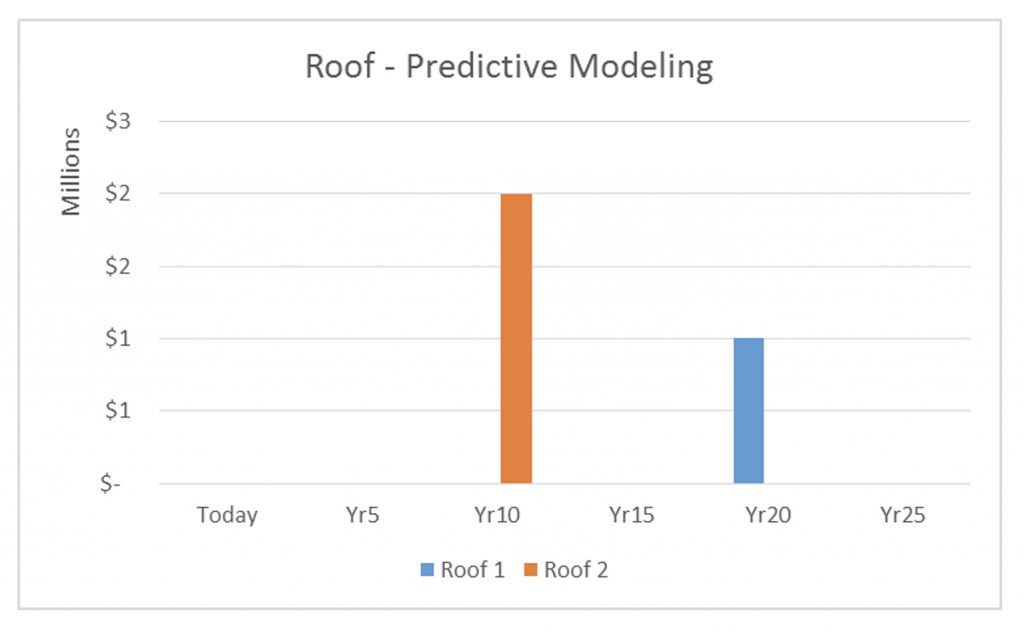
“Well, the after-hours report only averages a couple items on the report. Are the facilities really in that bad of a shape?” It’s often that we are putting out fires before they are known to anyone but us, and it’s done on top of addressing seemingly never-ending requests with limited resources and even scarcer budgets. How do we manage the asset, ask for the financial support of the investment of the asset, and keep everything operational while avoiding any catastrophic failures? Data is the key foundational component to the solution, and this is precisely where the APPA Total Cost of Ownership (TCO) comes in. TCO, a holistic and comprehensive asset management strategy, is designed to bring facilities professionals, at any level, to take the proven facility professionals’ work to the next level.
Defining Total Cost of Ownership
Of course, first and foremost and by definition, TCO is a summation of all costs of an asset at its core.
APPA Total Cost of Ownership (TCO) is a holistic approach to maximizing return on investment of managed physical assets that includes the summation of all known and estimated costs to include first, recurring, renewal/replacement, and end-of-useful life costs revised at critical decision points to aid in life-cycle asset management decisions.
“So, you’re telling me to go back to third grade and add to be a better facilities manager?” In a way, yes, but it’s much more than that. Going back to our first lone metric of how the assets are performing through the after-hours report, we see how data plays into informing decisions. A broader scope over a long period of time is needed.
Without good data, good decisions can never be found. Without good data analysis or reporting of that data, good decisions may be thought to be found when in fact they are not.
The second part of the definition for TCO reveals that it is only through the data—and data analysis—that we can make the best, informed decisions. And, as the last article in this publication shared, “Many can be overwhelmed with data without the proper tools to interpret it.” This is where the second part of the TCO definition comes into play.
Thirteen principles comprise the TCO strategy, and the interdependency and interrelatedness of each principle is critical to the success of TCO implementation. Four groups of principles exist:
- Integrity principles build a core of reliability for data collection, maintenance, verification, sharing, and reporting.
- Foundation principles create the basis for implementation: what data, where the data is housed, and how to categorize the data.
- Information Gathering principles sustain asset data as current and actionable with information pertinent for decision making: cost, inspection or assessment, and performance of the asset(s).
- When all these principles are accomplished, reliable, knowledge-based Decision Making is the result.

Figure 1: TCO Principles and Structure
These principles, their interdependency, and their interrelatedness to gain a TCO strategy, can be simply explained as effectively putting data into formats (reports, metrics, graphs, etc.) that can inform more robust decision making from the boots on the ground all the way up to the president of an organization.
If we keep our TCO Principles Structure and flip it, we can see how we turn data into the wisdom needed to make better decisions, as shown below.

Figure 2: Data to Wisdom: Making TCO Work
Start with Good Data
Having data is the first step. Transparency of data comes next. With transparency, you create good information. Good data over time elicits trust in the presented report, metric, or graph. Trust produces the ability to advocate for the budgets required to maintain your investments, and more importantly, to make the most informed decision with the funding you do have regardless of whether you actually get the funding you need.
So, let’s start with having data. TCO is not only the costing data, but all the data about the asset, to include name, age, life cycle, condition, and other asset data points. This is all important, as you have to be able to develop your TCO on a basis that is scaled over time and other factors. Before we go any further, it should be noted that TCO allows for scalability. Whatever level of data you have in your current possession will work to implement TCO. If you have estimates, let’s use those; if you have actuals, let’s use those. The TCO strategy can use whatever level of accuracy you can obtain.
Once you have the data, it’s imperative that there is transparency. Transparency is achieved through the sharing of data, which eliminates duplication, validates data, and promotes accurate data. Multiple eyes on data are better than one. If it is known that data will be viewed and will be the source of decision making, inherently, the quality and integrity of that data increases. Building mechanisms to make data transparent is a key part of TCO.
So, let’s suppose we now have good data that is trusted over time. Let’s go back to our first example of using data to make decisions. Our after-hours report shows minimal issues affecting our assets. No one would question that it is data. No one would question that it is trusted. The report is shared widely with the technicians doing the work, the manager managing the teams, and others in the organization. It is a direct report of work done, and it is reported to executive leadership, so they will make sure they are reporting correctly. Is this enough?
The TCO Strategy
With TCO, the strategy provides you with a framework on how to organize and use the right data to make the most effective, informed decisions with the funding at your disposal. But in the case of the after-hours report, there are a few key items missing:
- What are the assets or systems in our portfolio we want to track?
The after-hours report only tracks those assets with issues during a set time of the day, and no less during the wee hours of the night when the building is less operational. - How old is the asset?
The after-hours report doesn’t indicate the age of the asset. We don’t know if the issues with the asset are new, old, reoccurring or not. - What is the life-cycle expectancy (LCE) of the asset?
Knowing the assets predicated life cycle lets you know where the asset stands compared to its useful life. - What is the current replacement value (CRV) of the asset?
Knowing the investment of the asset benefits future decisions.
With just four pieces of information, a TCO strategy can be implemented:
- Asset or System Name
- Asset or System CRV
- Asset or System Age
- Asset or System Life Cycle
Very quickly, you can take one asset or two and make a simple table, keeping in mind that you can use estimates.

Table 1
From this, you can then create a predictive graph that allows for the future need of the asset or system (scaled to net present value terms).

Example 1
In this example, we used just two roofs, but you can apply this to the rest of the roofs on your site, or to the rest of the assets and systems on multiple sites.
As we move through a more complex implementation of assets using a TCO strategy, we can add more key items to develop more robust decision making about the assets that are as of now unknown on the after-hours report:
- What is the criticality of the space the asset or system serves? Will operations be impacted or halted?
- Are the maintenance and the energy consumption costs in alignment with what is expected?
This is unknown on the after-hours report. - Where is the asset or system located? Is this impacting the condition of the asset or system? (i.e., near ocean, very dry, or very humid areas)
- Is the space being served by the asset or system used as designed? (i.e., an office being used as a laboratory)
- Are there other factors impacting the space being served by the asset or system? (i.e., a project is underway in the space or adjoining space)
We have only begun to scratch the surface of how APPA TCO uses data to implement a strategy to holistically manage our investments. Building information modeling (BIM), as its name implies, plays an integral role in a complex TCO implementation, as these models are a trove of data from which to develop your TCO strategy.
There is no argument that our first example of the after-hours report is a good metric and is a quick way to get a temperature of what is going on with our investments, but TCO allows for you to go deeper and align all the data and information (both costs and asset information) to make the most effective, informed decisions.
Making an Immediate Impact
While TCO may seem daunting at first (you might think, “I don’t have resources or data to even start!”), the scalability of TCO allows you to begin with just four pieces of data. TCO is more than a summation tool. TCO is a strategy of moving from your current approach to a more sophisticated asset management paradigm. TCO allows you to start where you are, and meets you to immediately begin making an impact. It all begins with using the right data at the right time (coupled with an after-hours report or two).
Ana Thiemer is associate director, planning and project services, at the University of Texas at Austin. She can be reached at ana.thiemer@austin.utexas.edu.
Order the APPA 1000 TCO Standard from the APPA Bookstore.
Code Talkers
Code Talkers: Highlights the various codes, laws, and standards specific to educational facilities and explains the compliance issues and implications of enforcing these measures. To contribute, contact Kevin Willmann, FM Column Editor.
See all Code Talkers.


